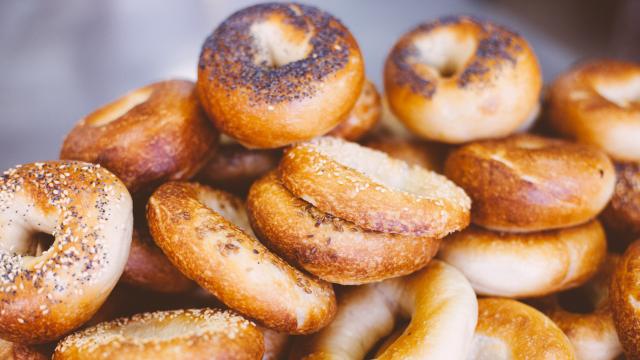Of all the bakery-style bread products you can make at home, bagels might be the most intimidating. They really shouldn’t be. The dough is easy to handle and very hard to mess up; with the right recipe, even your first attempt will taste 10 times better than anything you can get outside of a legit bagel shop.
The hard part is finding that recipe. I’m here to help. I used to make bagels professionally from a recipe I developed and, nearly a decade later, it’s still what I use at home. (I haven’t published it. Yet.) But you don’t need to be a former pro to sling great bagels in your very own kitchen — you just need to know what works and what doesn’t. Here are my best tips for determining whether a recipe is worth your time.
Start with the ingredients list
On top of the obvious (bread flour, water, salt, yeast), you’ll want a recipe that calls for a thick liquid sweetener. Traditionally, New York-style bagels use barley malt syrup and Montreal-style bagels use honey. I’ve used both, and prefer molasses because it’s cheap, common, and works great.
Next, work out the hydration percentage. It should be about 50%, which is much lower than other types of bread. This produces a dense, sturdy dough that holds up to boiling water and gets super chewy in the oven. Slightly higher hydration is fine, but once you hit 60% it turns into pizza dough.
Next, look at the directions
This is where things tend to get hairy. Bagels aren’t technically difficult to make, but doing it right takes time. Lots of recipes try to get around the time commitment by taking shortcuts that always hurt the finished product. Treat them like the red flags they are — if you see one, move along:
- No refrigeration: If a recipe doesn’t have you refrigerate the formed bagels overnight, it’s trash. A long, slow rise at a low temperature fully develops the gluten, locks the shape in place, adds some funky tang, and produces those iconic fermentation blisters on the crust. I can’t overstate the importance of this step.
- Baking soda in the water bath: Baking soda is a weak substitute for lye, which is for pretzels. Bagels are famously not pretzels; they get their shiny, snappy crust from slow fermentation, boiling water, and a screaming hot oven — not lye, let alone baking soda.
- Too much boiling: The longer you boil a bagel, the thicker and, well, crustier the crust gets. I’ve seen recipes call for 2 minutes per side, which causes me physical and emotional distress. Do you want sad, flat, rock-hard pucks? Didn’t think so. A quick dunk — 20 to 30 seconds total — is plenty.
Taking all of these criteria into consideration eliminates the vast majority of bagel recipes out there, but I can enthusiastically vouch for Becky Krystal and Alex Baldinger’s recipe in The Washington Post. (If you cut the boiling time in half, Peter Reinhart’s recipe is also good.) They take the time to do things right, and it shows: These recipes are easy to follow and always produce great results.

Leave a Reply
You must be logged in to post a comment.